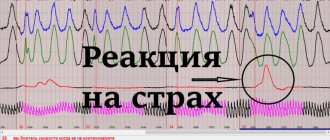Amaxophobia is an anxiety disorder in which a person is afraid to drive a car or use transport.
Historical facts say that the first self-propelled structures appeared at the end of the 18th century. Since then, independently moving technical means have changed greatly and are so firmly rooted in human life that it is impossible to imagine the modern world without machines.
Living in a metropolis, employment and social activity force people to use a personal car or public transport every day.
Despite the fact that self-propelled vehicles have not been a curiosity for a long time, a technical device can cause anxiety in a person, and sometimes severe fear - amaxophobia.
What is amaxophobia
Amaxophobia is a panicky fear of being in a dangerous situation related to transport (cars, subways, trolleybuses, trams, buses, etc.). The name is derived from the ancient Greek words amaxa, meaning "cart", and phobos, meaning "fear". Judging by the primary sources, the phobia has been known for a long time, dating back to the times when people used carts.
There are different types of amaxophobia:
- fear of a specific type of transport;
- fear of any cars;
- fear of driving a car, especially at high speed;
- fear of being hit by a car;
- fear of driving;
- fear of riding as a passenger in a car;
- fear of parking the car;
- fear of knocking someone down.
Some amaxophobes avoid meeting cars of a particular brand, size or color (many have a fear of large cars). Some people are afraid of personal transport, others are afraid of public transport. Moreover, some amaxophobes are afraid not so much of public transport as of the possibility of ruining their image (the belief that only the poor travel by public transport interferes) or becoming hostage to a dangerous situation (terrorist attack, attack).
Important! Anxiety and fear appear in response to the fantasies of an amaxophobe. He comes up with negative scenarios, which causes stress and anxiety in situations related to transport.
Recommendations
- If you feel panicked while driving, you can easily overcome it on your own. Just park in a safe place, turn on your hazard lights if necessary, and close your eyes. First you need to restore your breathing and eliminate dizziness. Breathe into your palms, this will return the oxygen level in your blood to normal. Which, due to shallow and frequent breathing, increased to maximum limits. Provoking even more anxiety and leading to loss of consciousness.
- Then use the method of positive affirmations. That is, statements that will help you calm down and believe in yourself. Start moving when you feel like you're back under control.
- Practice meditation and breathing techniques. This will help you find harmony within, relieve tension and other effects of stress.
Reasons for fear of cars
Psychologists believe that the main reason for the development of amaxophobia is psychotrauma received in childhood or adulthood. An accident in which a person found himself, or someone’s death under the wheels of a vehicle that he saw, a shocking report on TV - this and the like can cause injury and the development of a phobia.
In some cases, amaxophobia is combined with hyper-responsibility and the desire to control everything and everyone. Perhaps the person is afraid that something bad will happen to one of the passengers and he will not be able to help him.
As for the fear of getting into an accident, it is associated with the driver’s lack of confidence in his abilities (he is afraid that he will not be able to control the car) or with distrust of other road users. The latter is also true in cases where a person is afraid of getting under the wheels of a car.
Thus, the causes of amaxophobia include:
- lack of trust in yourself and other people;
- traumatic memories;
- wild imagination and suggestibility;
- excessive sense of responsibility.
What exactly is a person afraid of with amaxophobia? In general, depending on the reasons, the following subtypes of fear of transport can be distinguished:
- fear of driving (hitting someone, getting into an accident);
- fear that the vehicle will break down (you can check your car and make sure it is in good working order, but what about someone else’s vehicle?);
- fear of driving as a passenger (the person does not feel that he is in control of the situation, while sitting behind the wheel he feels confident);
- fear of getting into an awkward or stupid situation (women and new drivers often face this);
- fear of the unknown (what if other drivers bought a license or got behind the wheel drunk, or a random passer-by decides to throw himself in front of the car of the first person he meets);
- fear of losing control of oneself or losing consciousness while driving (this worries people with some diseases or health problems).
Interesting! According to one theory, fear of transport has a genetic predisposition. Children who have inherited anxiety and suspiciousness from their parents are susceptible to phobias.
How to overcome your fear of driving
“How to drive a car without fear?” is a question that torments 90% of beginners. First of all, understand that if you were able to pass your license on your own, then you know the basics of driving. This means that the instructor believes in you, and the traffic police officer believes that you deserve to go out on the road and do not pose a danger to yourself and others. All that remains is to gain experience in driving independently. And now more about how to get rid of the fear of driving a car.
We study the route and imagine the entire route in advance
Don't ignore modern gadgets and navigation systems. They will help you plan your route in advance and assess the path ahead. Most modern systems show both road restrictions and emergency situations on the roads. Pay attention to intersections and turns. You can drive along the route in advance or ask a friend to drive and be a passenger yourself.
Driving on familiar roads and visualizing them
Visualization is a powerful tool for psychological assistance. Imagine the road you have to travel along. Imagine the road in a positive way. You drive easily, the road is clear, other drivers are tactful, and the traffic inspectors are friendly. Imagine stopping at crosswalks, parking, and returning home.
Emergency driving courses and a good instructor
If you are afraid of an accident, then you need to take an emergency driving course. Such courses help improve driving technique and increase self-esteem. They will be useful not only for beginners, but also for those who are afraid to drive a car after an accident.
A travel companion who can give you advice
Place your husband, boyfriend or girlfriend in the back seat. You will know that if something happens, they will help you and advise you. But at the same time, you will understand that controlling the car rests solely on your shoulders. Next time, ask someone to follow you in a different car rather than with you. You can ask your friends how to overcome the fear of driving a car, find out their experience.
Constant practice on lightly congested routes
You can gain experience and get rid of fear only through practice. All people were afraid of starting to drive, everyone started out by driving slowly and carefully, everyone sometimes got lost on the road, especially in unfamiliar places. Start gaining experience in sparsely populated areas with lightly congested roads, do not immediately start driving on large highways.
Novice driver and low speed
Try not to go on busy roads, avoid rush hours. It is better to start driving on rural roads and driving around a small town during free hours. Try to gain experience during daylight hours. Don't rush to drive at high speed. Drive at a speed that gives you confidence. But remember that low speed in busy places can create an emergency situation. Remember that you should not disturb other people.
Remove distractions (phone, music)
Remember that traffic rules and laws are the same for everyone. Don't expect traffic police officers to be lenient towards you. If you don't expect a condescending attitude, you won't be disappointed or discouraged by reality.
Don't be distracted by talking on the phone, putting on makeup, or listening to music. Although for some people music, on the contrary, relaxes and inspires confidence. If this is your case, then choose the musical accompaniment that cheers you up.
Signs and symptoms of a fear of cars
The main symptom and sign is a panicky fear of transport and avoidance of potentially dangerous situations. If it is not possible to avoid meeting the object of fear, then the person is seized with panic. At such moments, he does not control himself, does not control his actions and reactions.
A panic attack is accompanied by a number of somatic changes:
- nausea,
- headache,
- dizziness,
- chills,
- tremor,
- chest pain,
- dyspnea,
- tachycardia,
- arrhythmia,
- feeling of suffocation
- cold sweat,
- fainting.
The most common causes of irrational fear
- Driving in the dark, in poor lighting or in weather that impairs visibility;
- Intersections and generally places where it is necessary to give priority to other vehicles;
- Traffic jams and heavy traffic;
- Using someone else's car for which you are currently fully responsible;
- Unpredictable situations on the road, for example, when animals suddenly jump out;
- Doubts about your ability to overcome fear and cope with unpredictable danger while driving on the highway. Let’s say that if you don’t have the skills to drive a car in icy conditions, the amaxophobe will be incredibly afraid to go out at all until the winter passes;
- The passenger worries about the safety of his life if he does not trust the skills and knowledge of the driver.
- Responsibility for passengers, especially if there are small children among them;
- Lack of confidence in the skills and mental and physical state of other drivers with whom you have to cross during the trip.
Diagnosis of fear of cars
The diagnosis is carried out by a psychologist. It is important to distinguish amaxophobia from other disorders, for example, fear of people (if the patient is frightened by public transport). You also need to make sure that this is an irrational, obsessive fear, and not a normal reaction. For example, fear at the very beginning of learning to drive is a normal reaction. In this case, a person needs to learn self-regulation and gradually gain experience, then the fear will pass. If the patient has recently been in an accident and is now afraid of cars, then PTSD (post-traumatic stress disorder) is evident.
Important! The diagnosis of “amaxophobia” is made if a person is bothered by obsessive thoughts related to transport, these same thoughts cause anxiety, fear and panic, and the person tries to avoid frightening situations related to cars.
How to deal with a phobia of public transport?
There comes a moment in the life of every VSD patient when the patient says to himself: “Enough! Stop! It's time to do something about it!” The final result depends on the patient’s determination, self-confidence and perseverance. Phobias can and should be fought. Any phobia is curable. And there are many VSDers who have gotten rid of the fear of vehicles, and now live happily, travel by subway and fly by plane. If you decide to overcome agoraphobia, the following methods will come to your aid:
- "Wedge with wedge." The patient independently analyzes his fear, its uselessness and begins to slowly remove himself from this state. Starts small: going out with family and friends to public places, but where there are not many people: stadium, library, park. As soon as the first stage begins to bear fruit in the form of the absence of phobic manifestations, you can “increase” the audience.
- Cognitive psychotherapy. Working with the patient’s personal “I”, building an adequate attitude towards one’s phobia and its manifestations, transforming the point of view on the problem.
- Systematic desensitization (de - without, sense - feeling). A method of psychotherapy, the purpose of which is to reduce the sensitivity of the VSD person to factors that cause panic, in this case, to traveling on public transport and being in public in general.
The VSD can deprive its “chosen one” of many pleasures, but the right to choose remains with the person. And fewer and fewer people make their choice in favor of phobias, because life is beautiful and amazing.
Treatment of fear of cars
Experts say that treatment for amaxophobia should be started only if it prevents a person from living a full life. In other cases, according to experts, this fear can be useful. It forces a person to be selective and attentive.
If treatment is indicated, then group psychotherapy and individual consultations are used. It is important to identify the root cause of fear and deal with it. If we are talking about PTSD and other serious causes, then auxiliary medical treatment is prescribed: antidepressants, antipsychotics, sedatives. In some cases, hypnosis sessions are prescribed.
If a person is afraid of driving, but still wants to overcome this and drive a car, then he should not be prescribed psychoactive drugs. At least for the period of treatment, it is better to stop driving.
It is important! The difficulty of treating amaxophobia is that it is necessary not to completely eliminate fear, but to normalize its level.
How to overcome your fear of driving on your own? You have to convince yourself that a car is just a mechanism. She has no soul and no mind. You are driving a car and nothing else. Train first on deserted streets, in fields. Gradually move out into the city. Feel how you take control of your transport.
What else to do? Make a list of what you are missing out on because you are afraid to drive or ride as a passenger. Delays, huge travel time, noisy and sweaty public transport, abandonment of some plans due to the fact that there is no way to get there or you are afraid to call a taxi are a small part of what is associated with the fear of traveling in public transport.
If you are afraid to ride in a taxi or hitch a ride, then make it a rule to always write down the license plate number of the car and send it to one of your friends. Don't travel alone.
You will find even more practical tips in the following videos.
The car and the first negative experience of humanity
The first accident involving self-propelled vehicles occurred in Paris in 1771. To avoid hitting children on the road, engineer Cugno, driving a homemade steam tractor, was forced to turn and crashed into the wall of an armory.
An accident involving two vehicles (an electric car and a bicycle) occurred in New York on May 30, 1896. The injured cyclist suffered a broken leg.
First car
The first arrest for speeding was also made in New York. The taxi driver who recklessly accelerated to a speed of 19 km/h was detained.
The first accident involving the death of a pedestrian occurred in England in 1831. A woman who unexpectedly stepped onto the road died under the wheels of a car. These events opened a continuously growing list of road accidents.
Why is a fear of cars dangerous?
In advanced stages, amaxophobia may even refuse to leave the house. With a less severe course of amaxophobia, he simply refuses a specific type of transport or travel by transport, changes routes. It is worth noting that the refusal of transport in large cities significantly complicates life. Accordingly, regardless of the stage of the disease, the quality of life of an amaxophobe suffers. And constant tension and stress lead to the appearance of secondary mental disorders and somatic diseases.
Signs
At the thought of taking a ride in public transport, a person’s arms and legs may begin to tremble. By the way, they are still getting colder and starting to sweat intensely. Even at sub-zero temperatures indoors or outdoors.
Often a panic attack occurs; this is when a person loses control over himself due to anxiety and it seems to him that he is about to die. Choking or from a heart attack, because at such a moment a strong stabbing begins in the left side of the chest.
Blood pressure rises, the face turns red, and sometimes turns pale when fainting. Those who have problems with the gastrointestinal tract experience all the “delights” of diarrhea, as well as cramps.
You may feel nauseous and start vomiting. Loss of control leads to a change in perception of reality. She becomes extremely dangerous and evokes one desire - to run away and hide.
And this is just very risky. Because when running away in panic, a person does not notice anything around him and easily becomes a victim of an accident. Sometimes with a fatal outcome if he jumps out onto the road and ends up under a car.
In severe forms of manifestation, when obsessive thoughts take over the consciousness, amaxophobia simply decides not to leave the house. Because it’s unbearable to see cars around you. Even in the most remote village they exist, to say nothing of megacities.
Such isolation and alienation gradually leads to depression, degradation, and complete loss of social connections.
You will learn more about what degradation is in this article.
Celebrities and their phobias
Up to 10% of people on the planet are susceptible to motor phobia. Most often, people aged 20 to 40 years are at risk. Celebrities also suffer from phobias. Writer Stephen King was afraid of airplane flights, cats and the dark. Woody Allen is afraid of confined spaces, heights, spiders and has been treated by a psychotherapist for a long time. The poet Mayakovsky was afraid of germs. Joseph Stalin was afraid of airplanes, being poisoned, and going to bed. After an unsuccessful plane flight, Jennifer Aniston began to experience fear of flying. Alfred Hitchcock, the director of the horror film Psycho, was afraid of eggs; for him they were disgusting. Singer Madonna is afraid of thunder.
Definition
Fear of driving a car - amaxophobia. It is widespread among people who have a very high protective threshold before traveling in transport, both private and public. Manifests:
- in road accident participants;
- witnesses of an accident;
- little children;
- novice drivers.
Amaxophobia can occur as an independent phobia or be a consequence of other psychological problems. Psychology identifies several phobias that can result in the development of a fear of driving.
- Hypengiophobia – fear of taking responsibility.
- Thanatophobia is the fear of dying.
- Criminophobia is the fear of killing someone or committing a crime.
- Pyrophobia is the fear of a car fire.
Which doctor should I contact?
At the first signs of amaxophobia, you should immediately consult a psychotherapist before the disorder becomes acute
The first symptoms of a phobia appear already in driving school, so a person’s future life will depend on how one manages to overcome the fear of driving. For amaxophobia, treatment should begin immediately, before the disorder becomes severe.
At the first symptoms you should consult a psychotherapist. The doctor will be able to accurately diagnose the phobia after talking with the patient. In addition, a specialist will be able to determine the cause of the development of fear. On average, a consultation will cost 500-1000 rubles.
Symptoms of manifestation
Amaxophobia, like any other mental disorder, can manifest itself in several degrees of severity. In mild forms, the fear of driving is manifested in the driver by increased nervousness and fussiness. If the disease manifests itself in a severe form, then other characteristic symptoms are found:
- weakness, slight numbness throughout the body appears;
- breathing becomes more frequent, shortness of breath may occur;
- the rhythm of the heartbeat changes;
- nausea begins, accompanied by dizziness and loss of space;
- profuse sweating begins.
With such symptoms, it is difficult for a person to come to his senses, pull himself together and orient himself in the environment. Amaxophobia may not appear at the moment when a completely adequate, experienced and confident driver gets behind the wheel. A state of panic can begin suddenly during an emergency on the road or when driving into a too busy, dangerous area of traffic.
People suffering from amaxophobia feel that they are on the verge of life and death. Their behavior in such cases is approximately the same. They ask for help from others, call the ambulance station with a feeling of “approaching death.” In such cases, it is necessary to have a fast-acting sedative with you. An amaxophobic driver must be able to give himself an injection , or there must be someone next to him who can provide first aid.
The introduction of a sedative can quickly stop a panic attack. Your car's first aid kit should always contain tablets of glycized, valerian or other drugs that only a doctor can select.
If the fear of driving a car manifests itself with severe and pronounced symptoms, then sedatives alone will not work. More serious, special treatment will be required.
conclusions
Any type of phobia is not a disease, it is a type of fear that is born in the head. The main thing is not to confuse a panic attack with tachycardia or bronchial asthma, as the signs are similar. It is advisable to avoid the use of tranquilizers; they have a rapid effect, but their use causes undesirable consequences.
We recommend watching:
We recommend reading:
Important information about vomitophobia or emetophobia - fear of vomiting
Previous article
All about ophidiophobia or herpetophobia - fear of snakes
Next article











